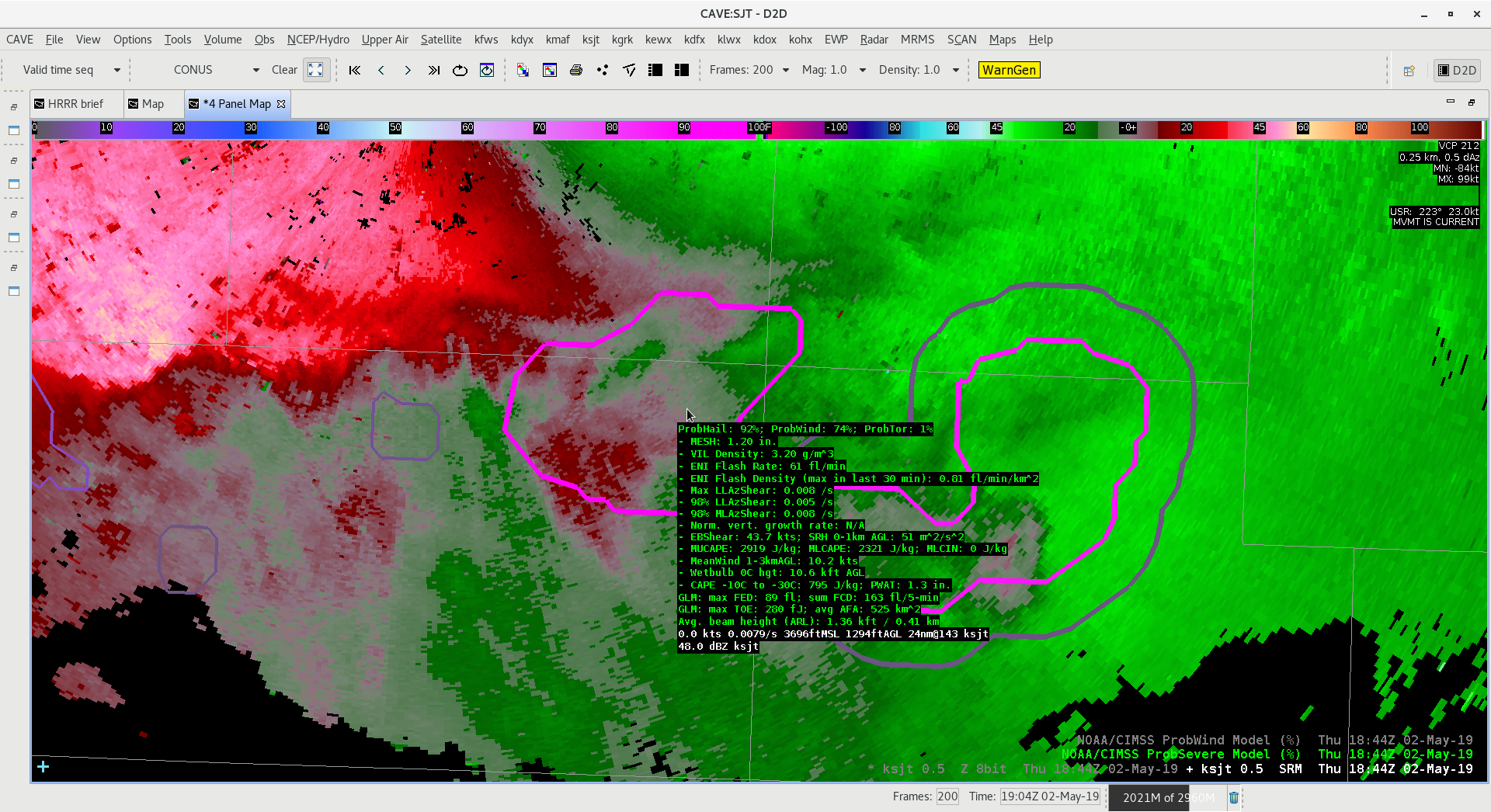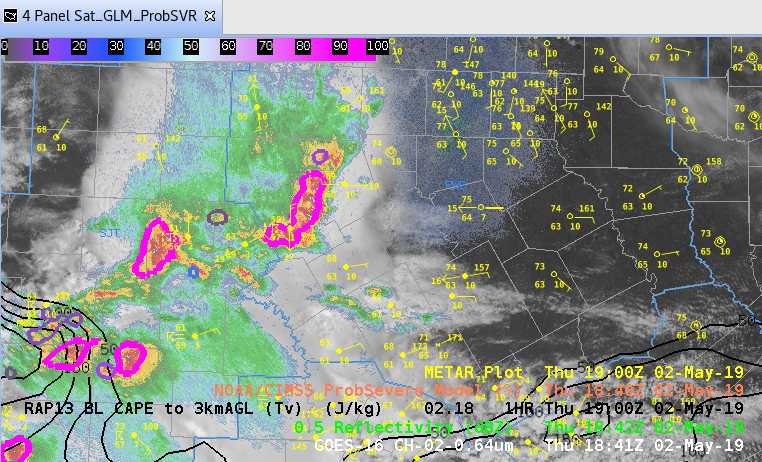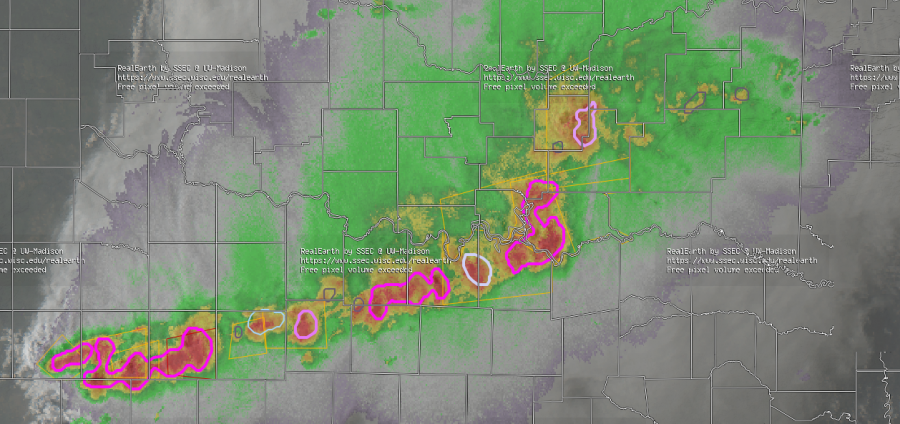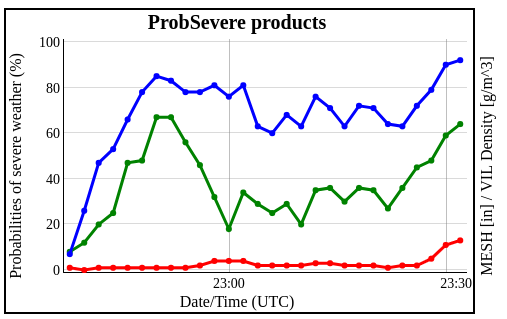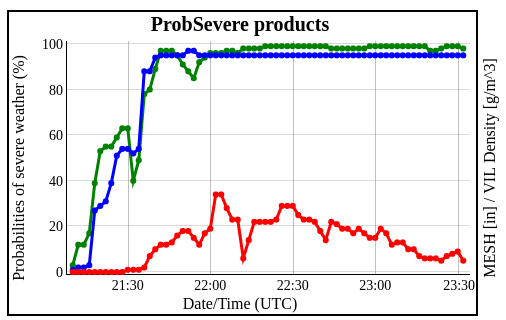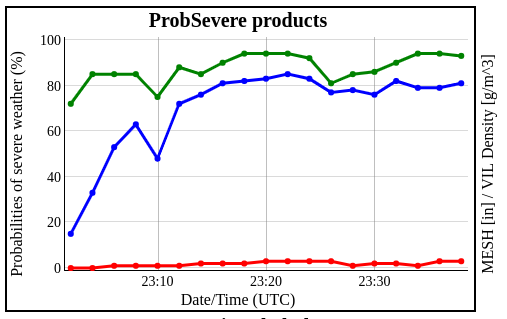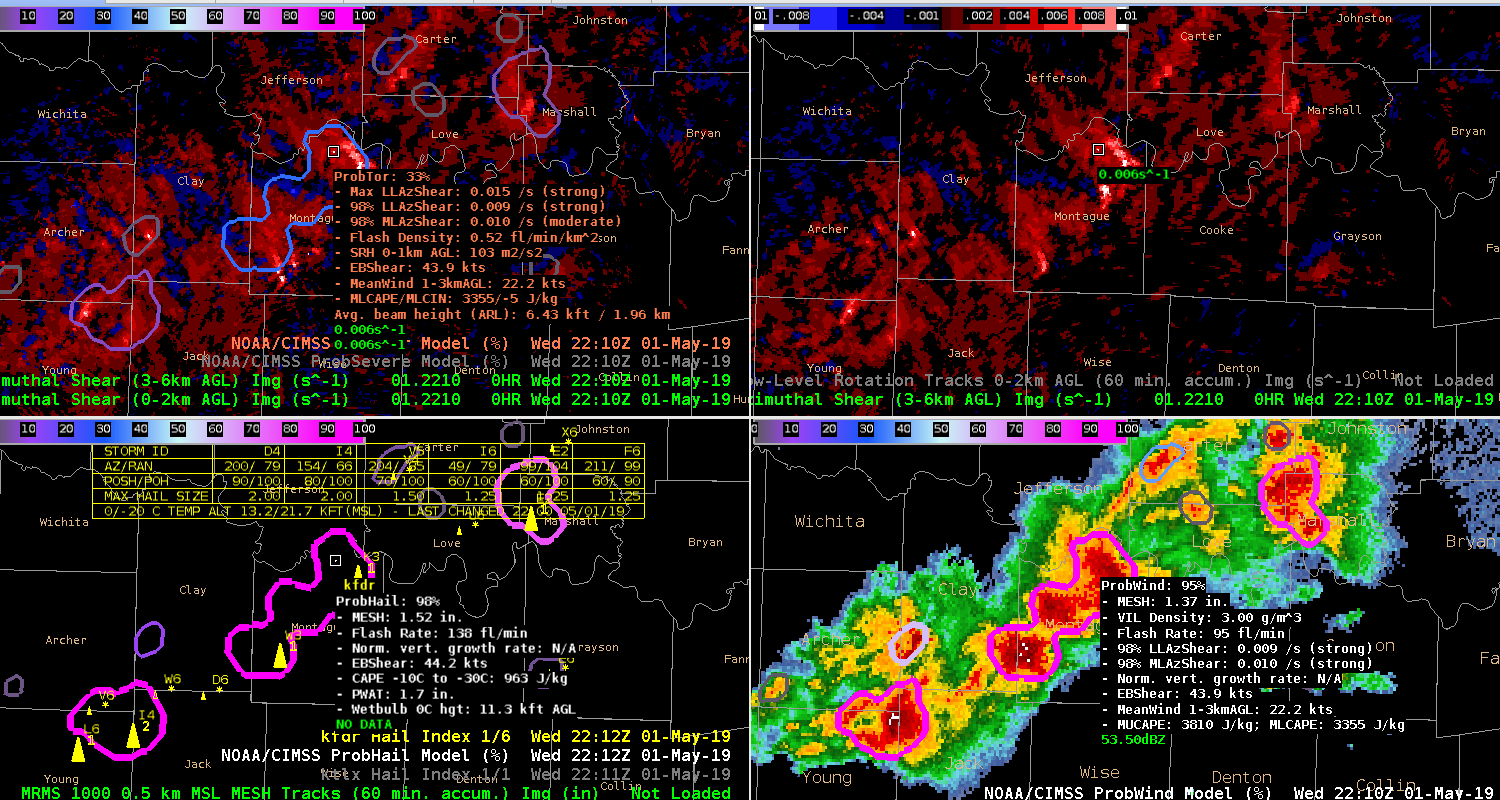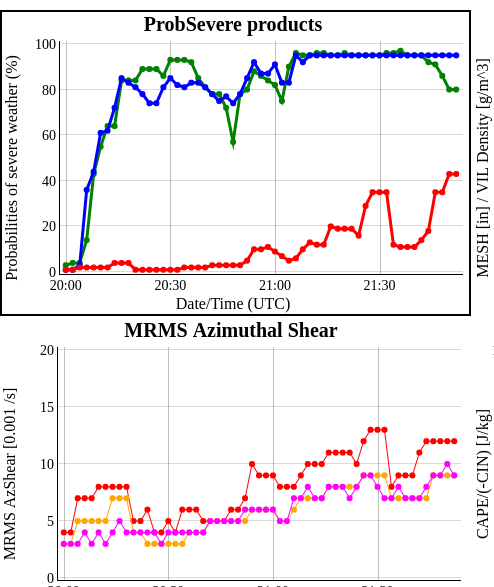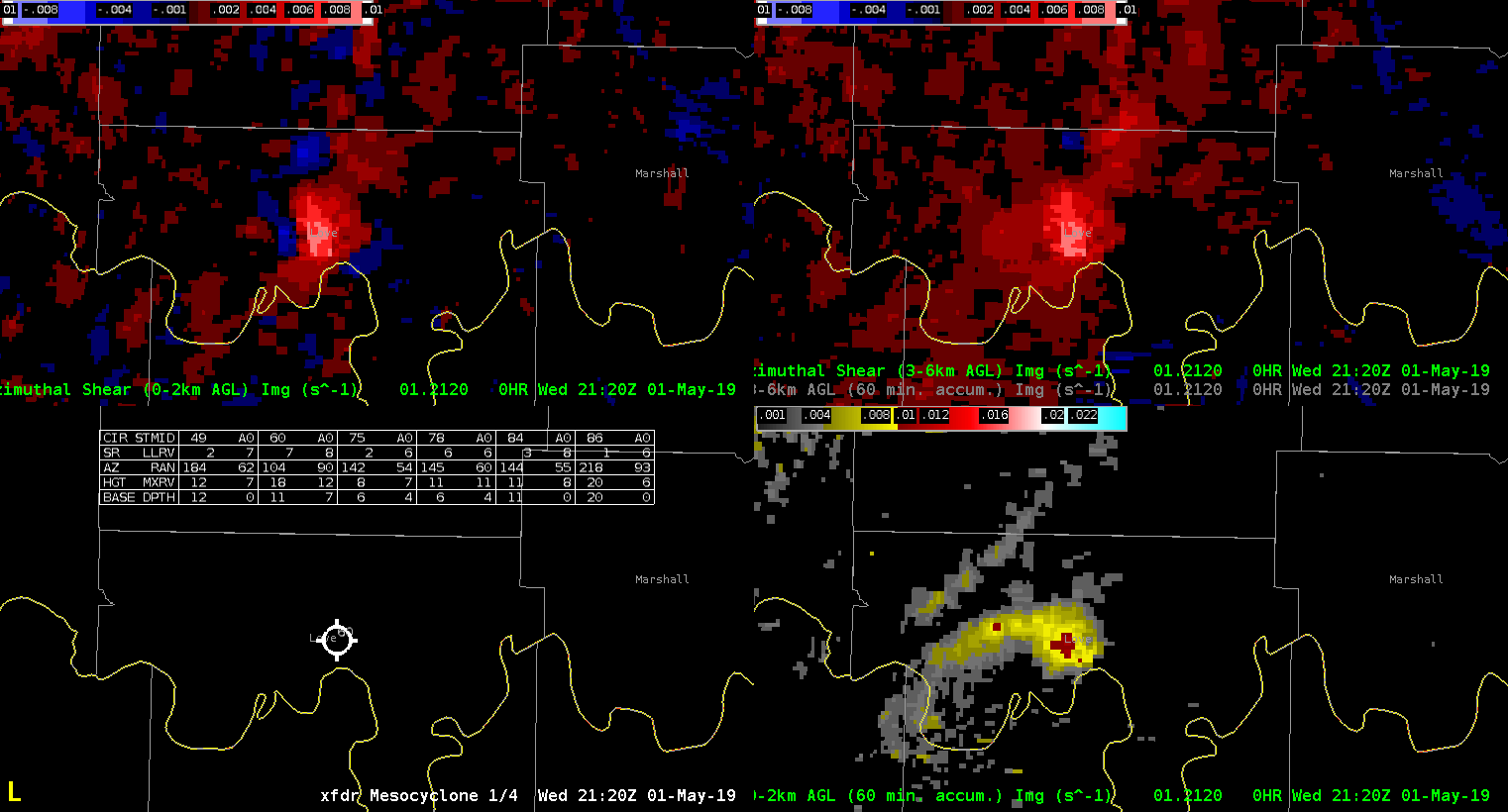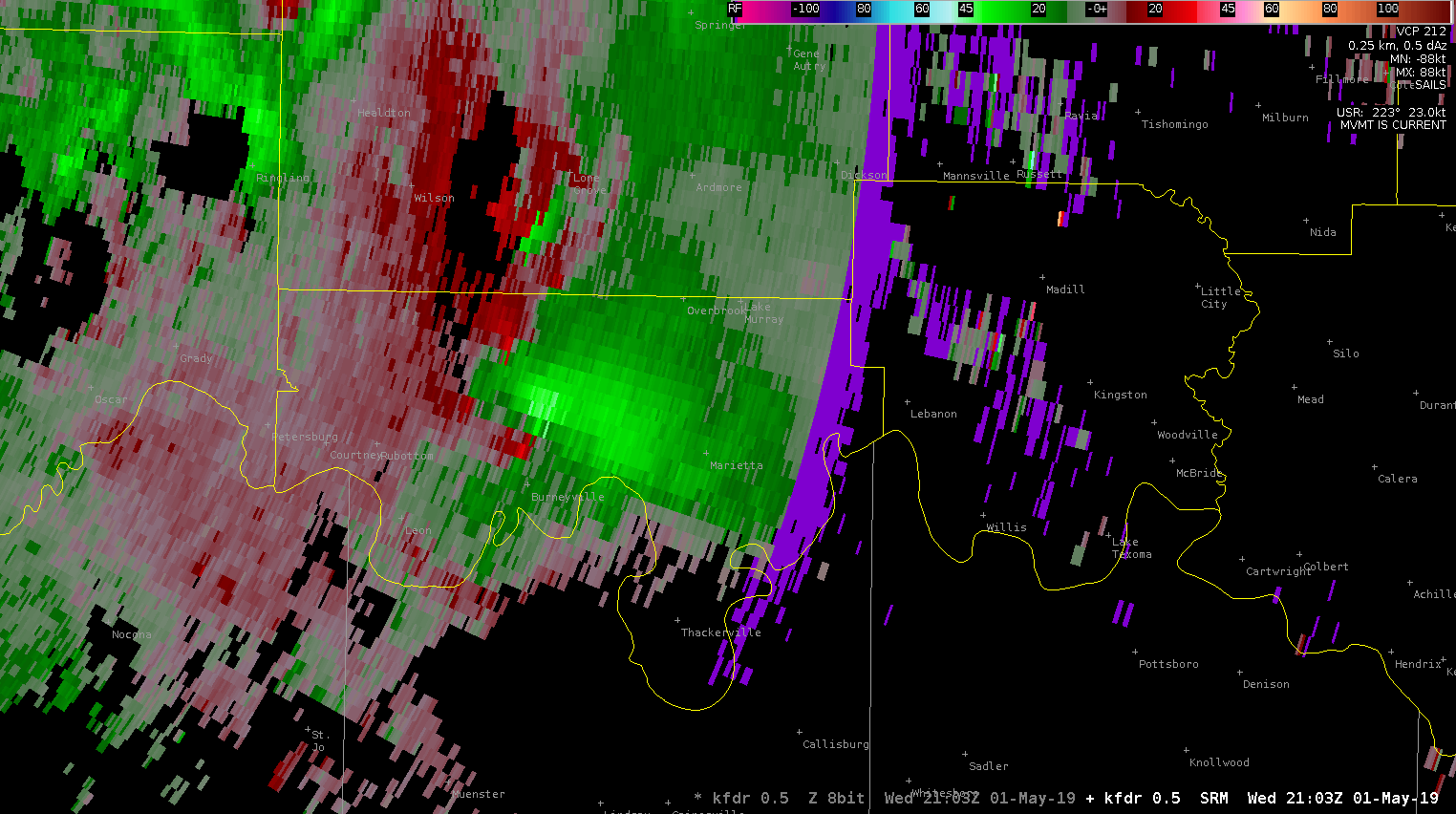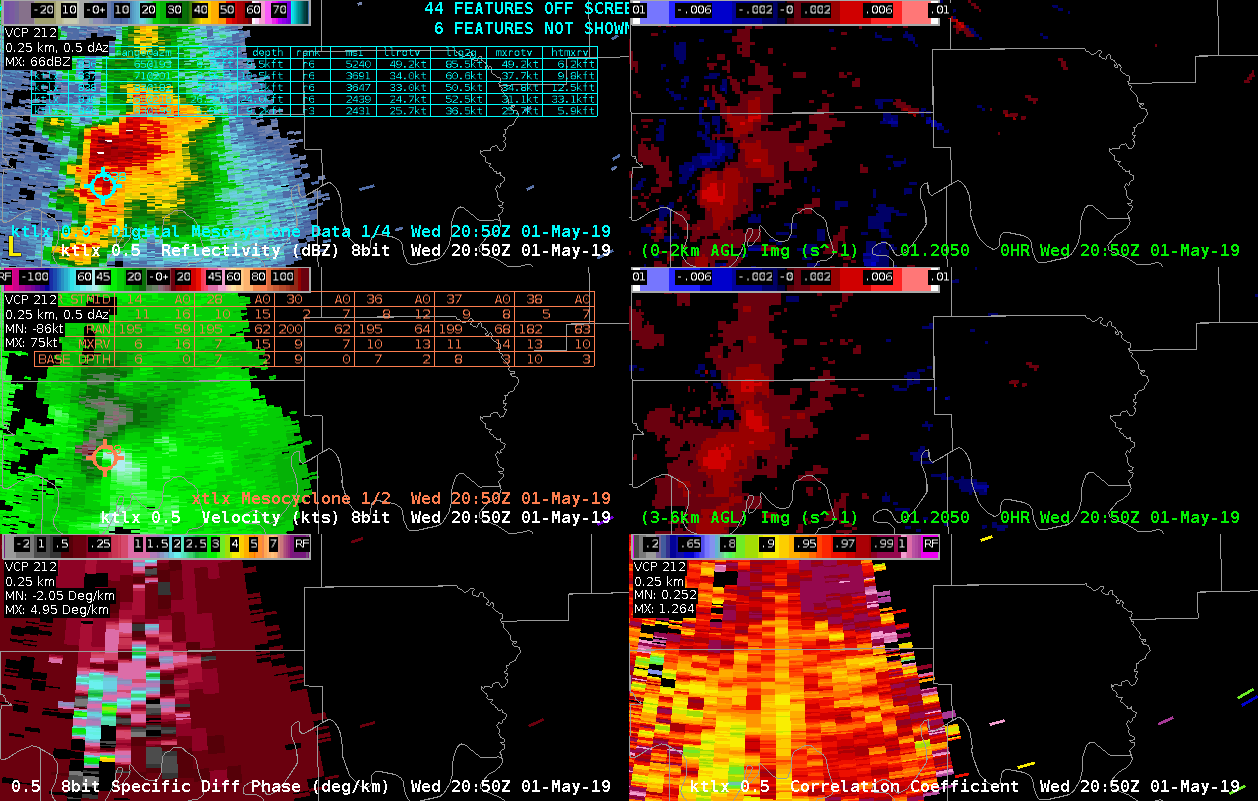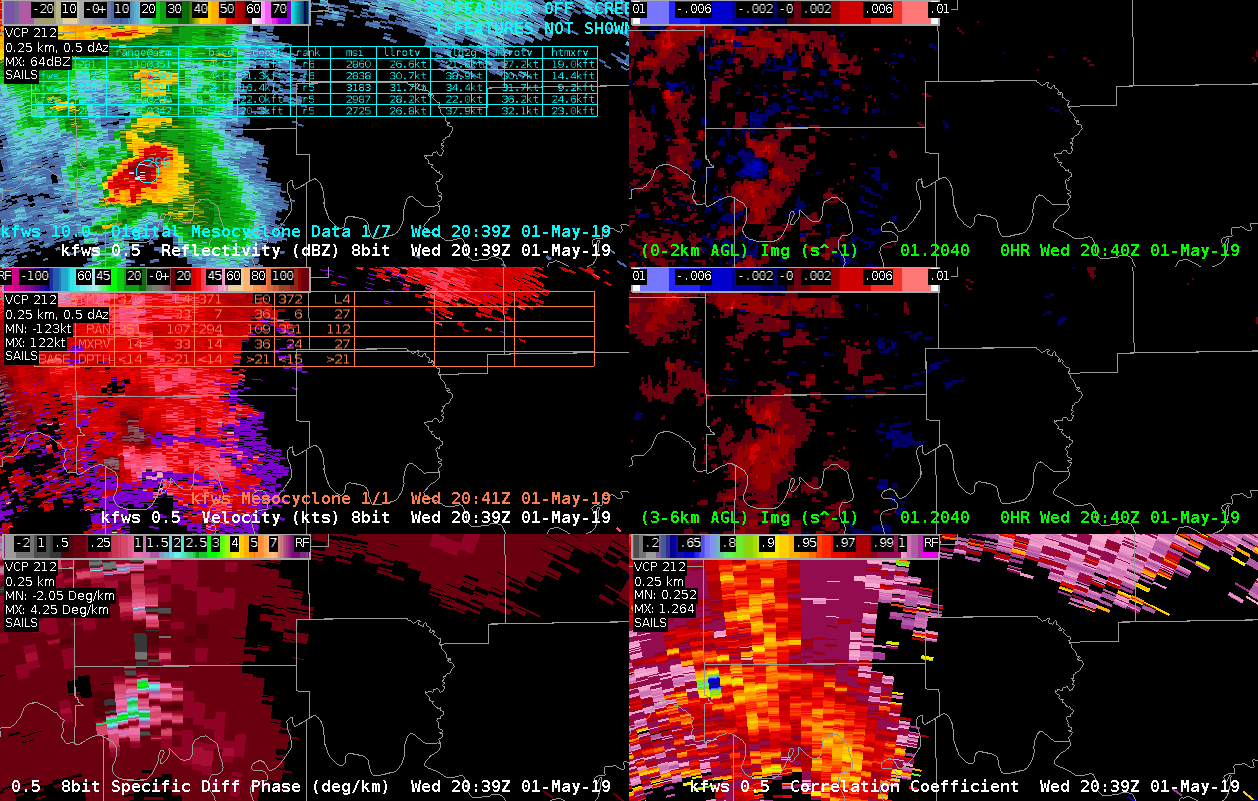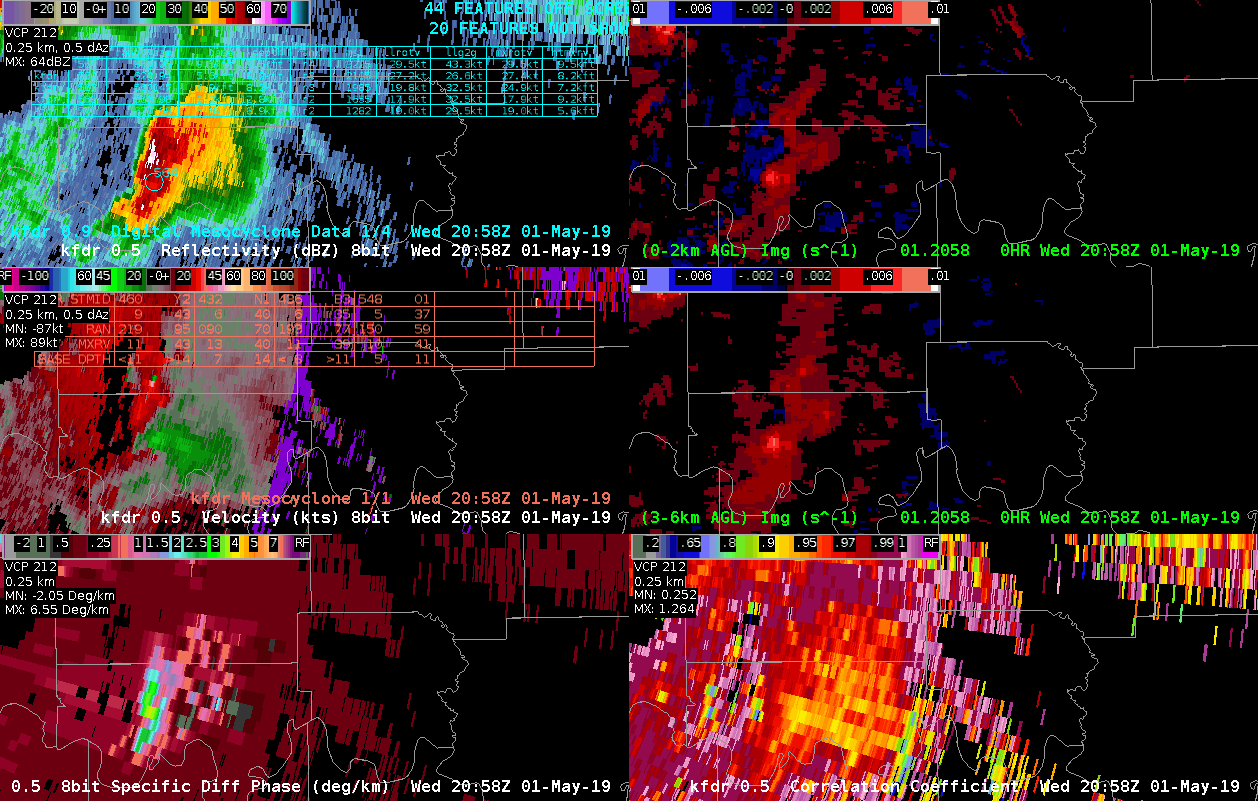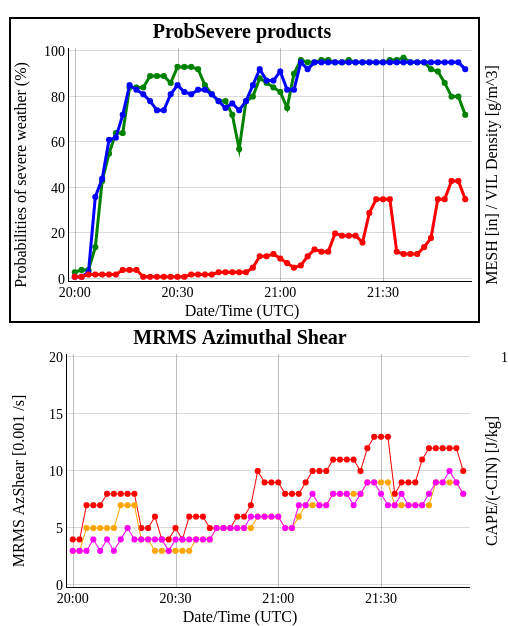One storm became near severe around 545 pm in EWX CWA. All parameters; lightning, ProbSevere and Dual-pol radar agreed on the evolution of the storm and expected impacts. Radar data suggested there to be equal wind and hail threat based on high ZDR and KDP within the core suggesting sub-severe hail. There was some notching in the back side of the storm’s reflectivity as the front end of the storm surged eastward suggesting some wind threat. Lightning over this time had increase from 10 fl/min to 20 fl/min about 15-20 minutes prior to the development of some weak mid level rotation. As the storm cycled and weakened, so did the lightning and ProbSevere values. An uptick in GLM event density was followed by a slight increase in ProbSevere values toward the end of the loop.
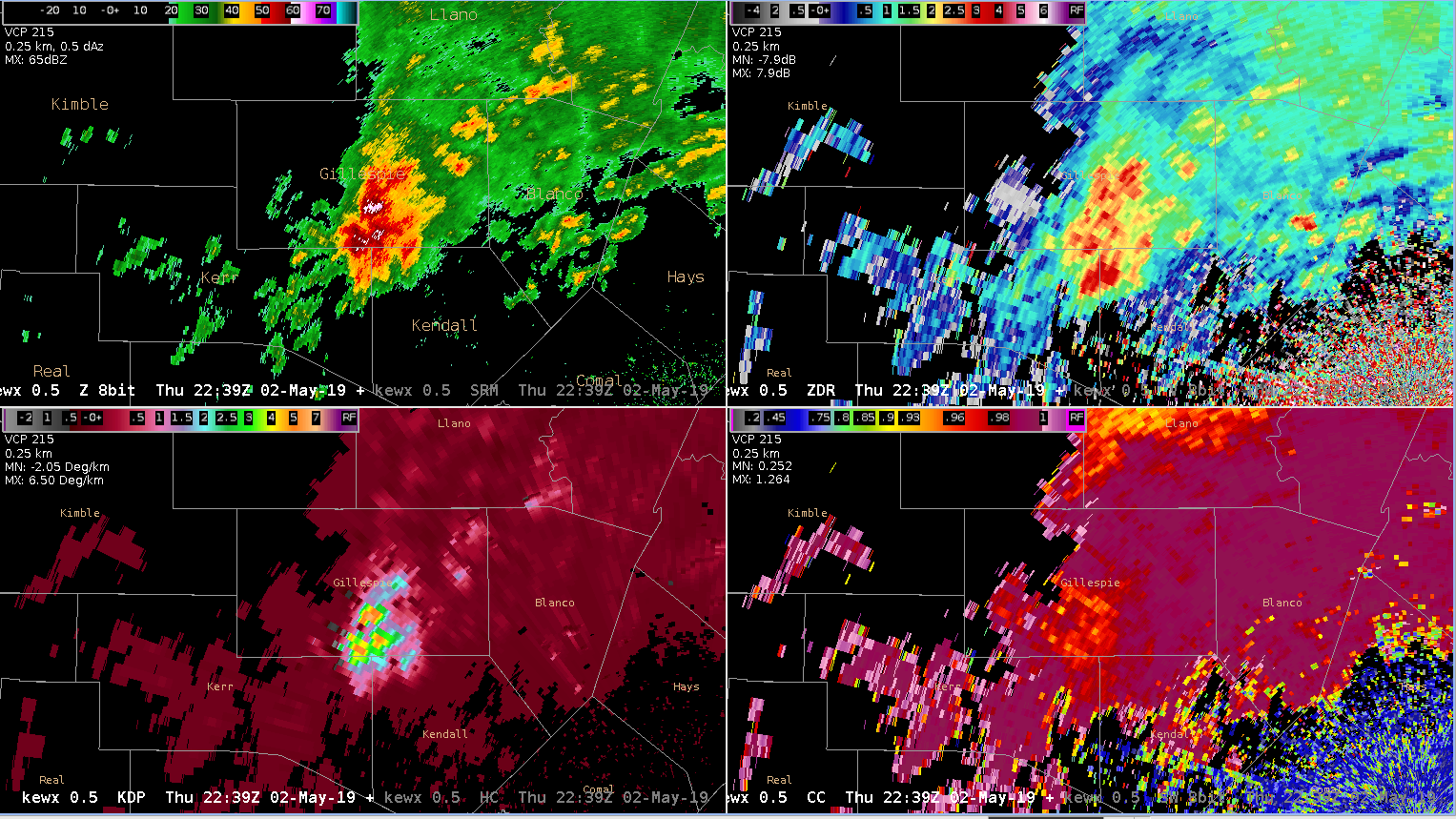
KEWX 4-panel – Refl (UL), ZDR (UR), KDP (LL), CC (LR)
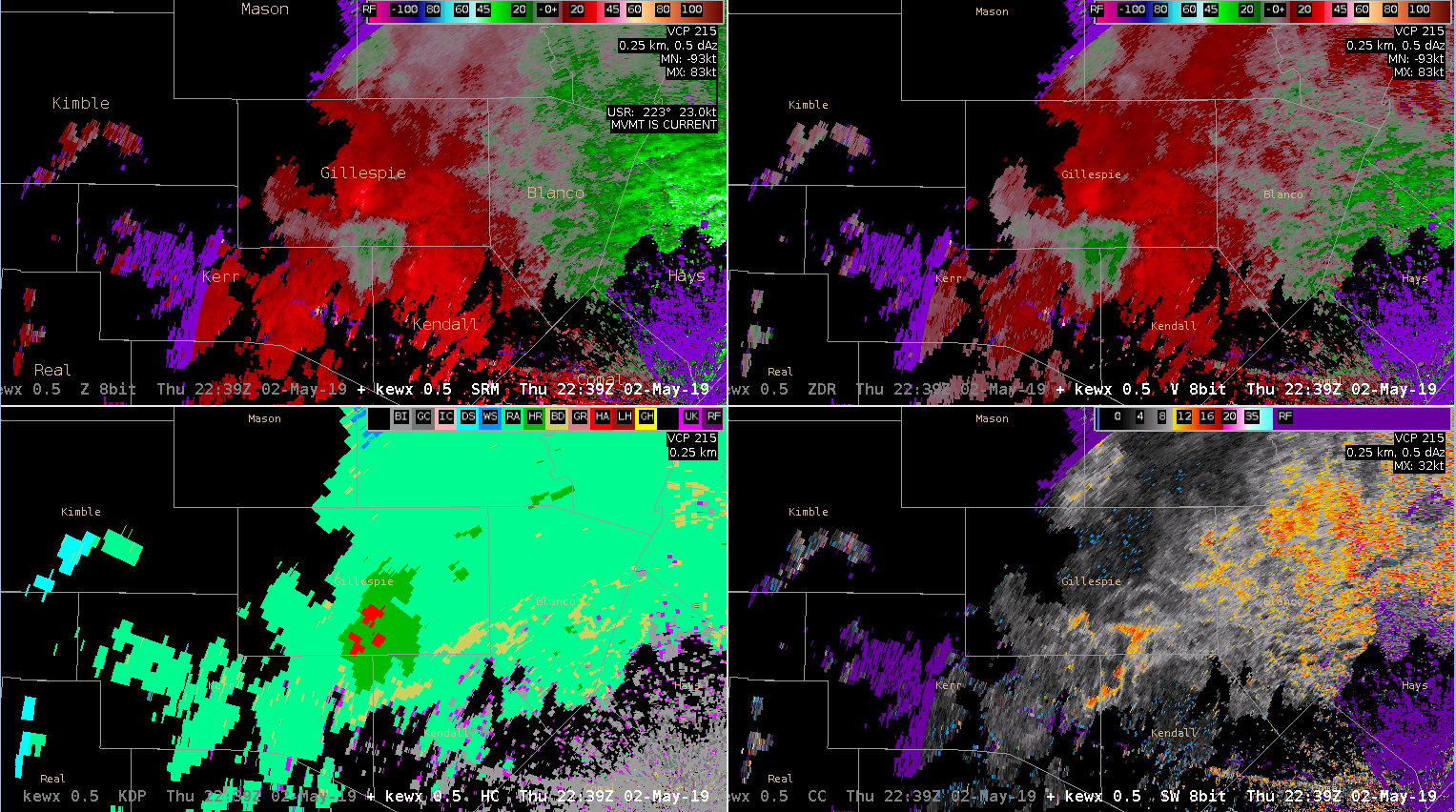
KEWX 4-panel – SRM (UL), V (UR), HC (LL), SW (LR)
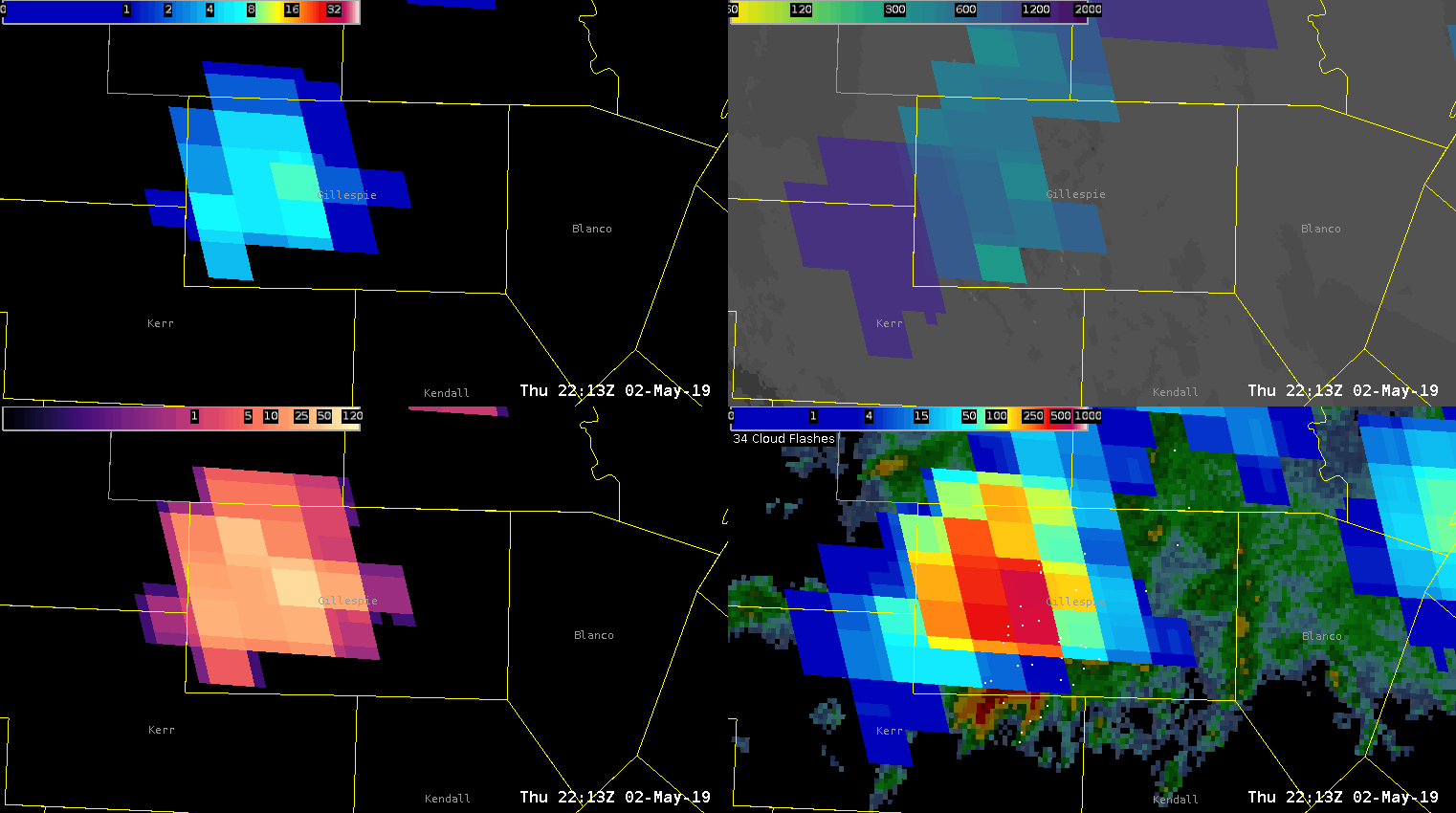
GLM sequence of Gillespie County storm – 1-min(FED)(UL),AFA(UR),TOE(LL),EventDensity(LR)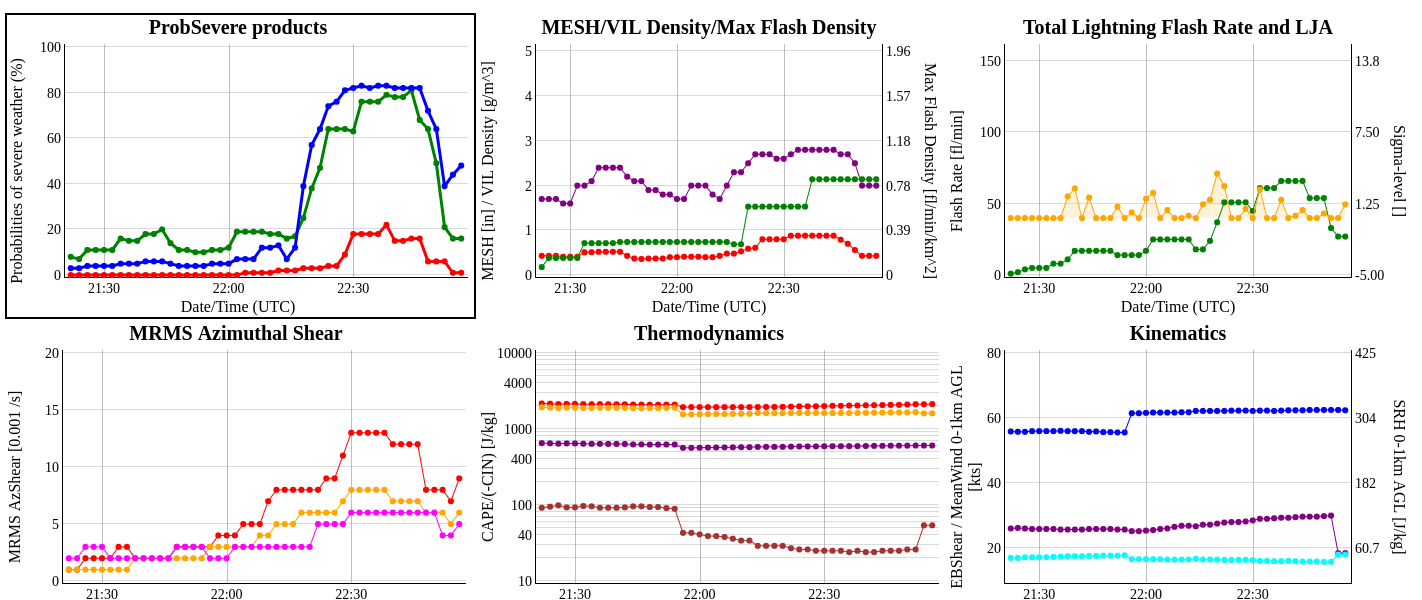
ProbSevere time trends from http://cimss.ssec.wisc.edu/severe_conv/plots/PSplots.php?ID=176047
— SCoulomb


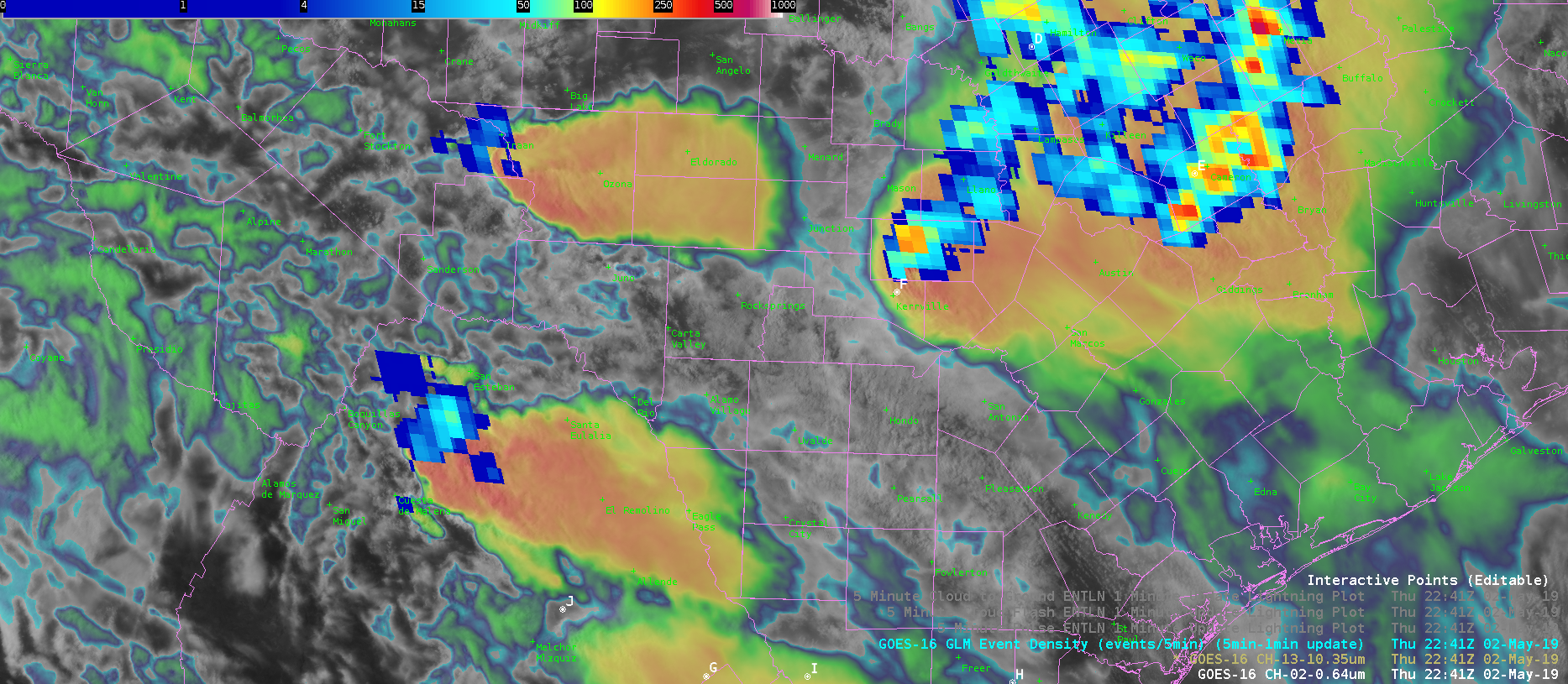
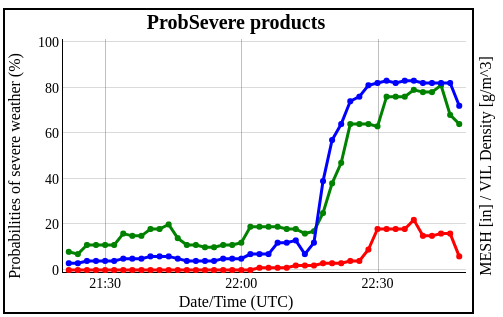
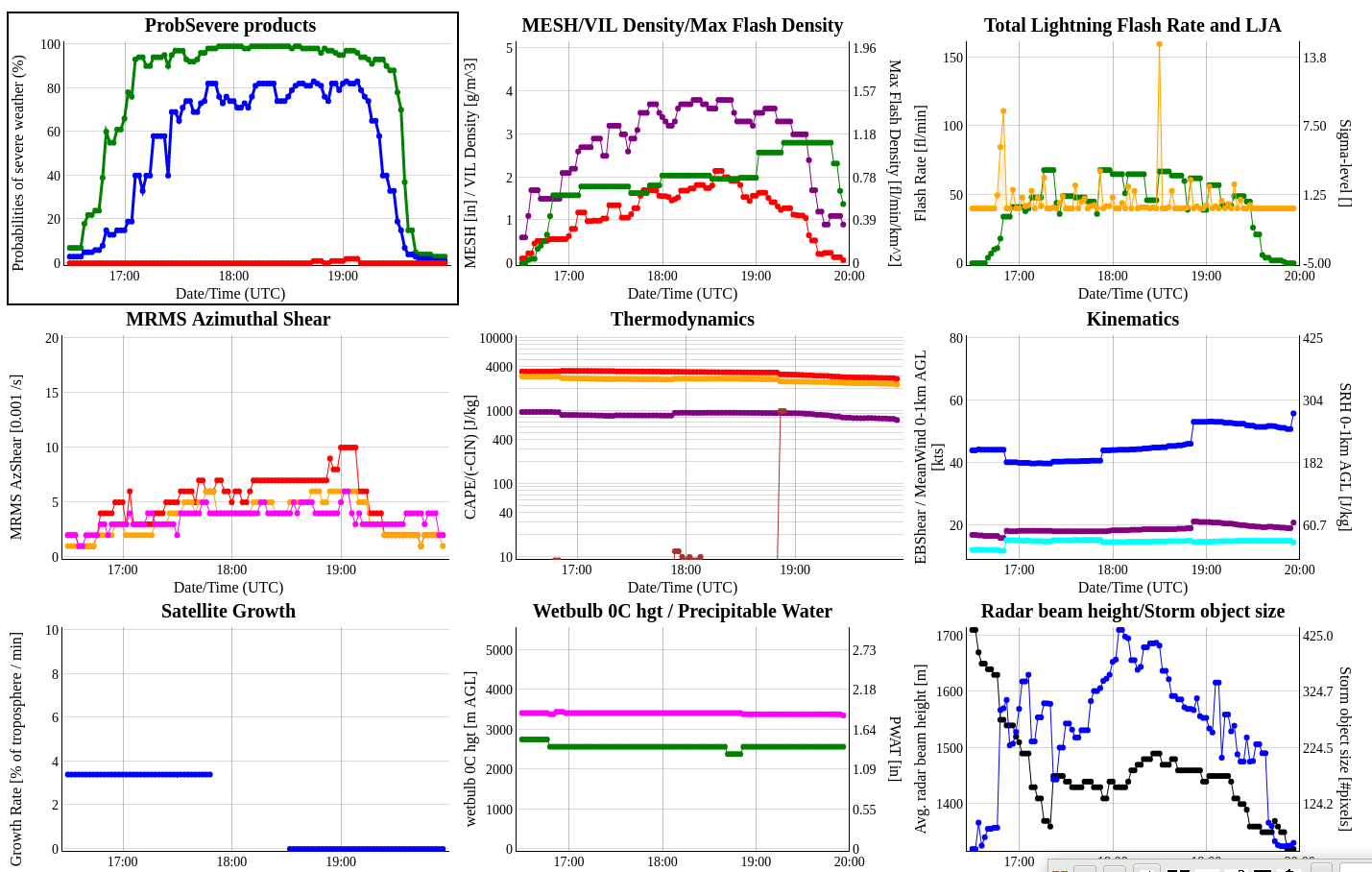 Graph of probsevere for splitting supercell discussed in earlier blog entries. These graphs are extremely useful to forecasters looking for trend analysis.
Graph of probsevere for splitting supercell discussed in earlier blog entries. These graphs are extremely useful to forecasters looking for trend analysis.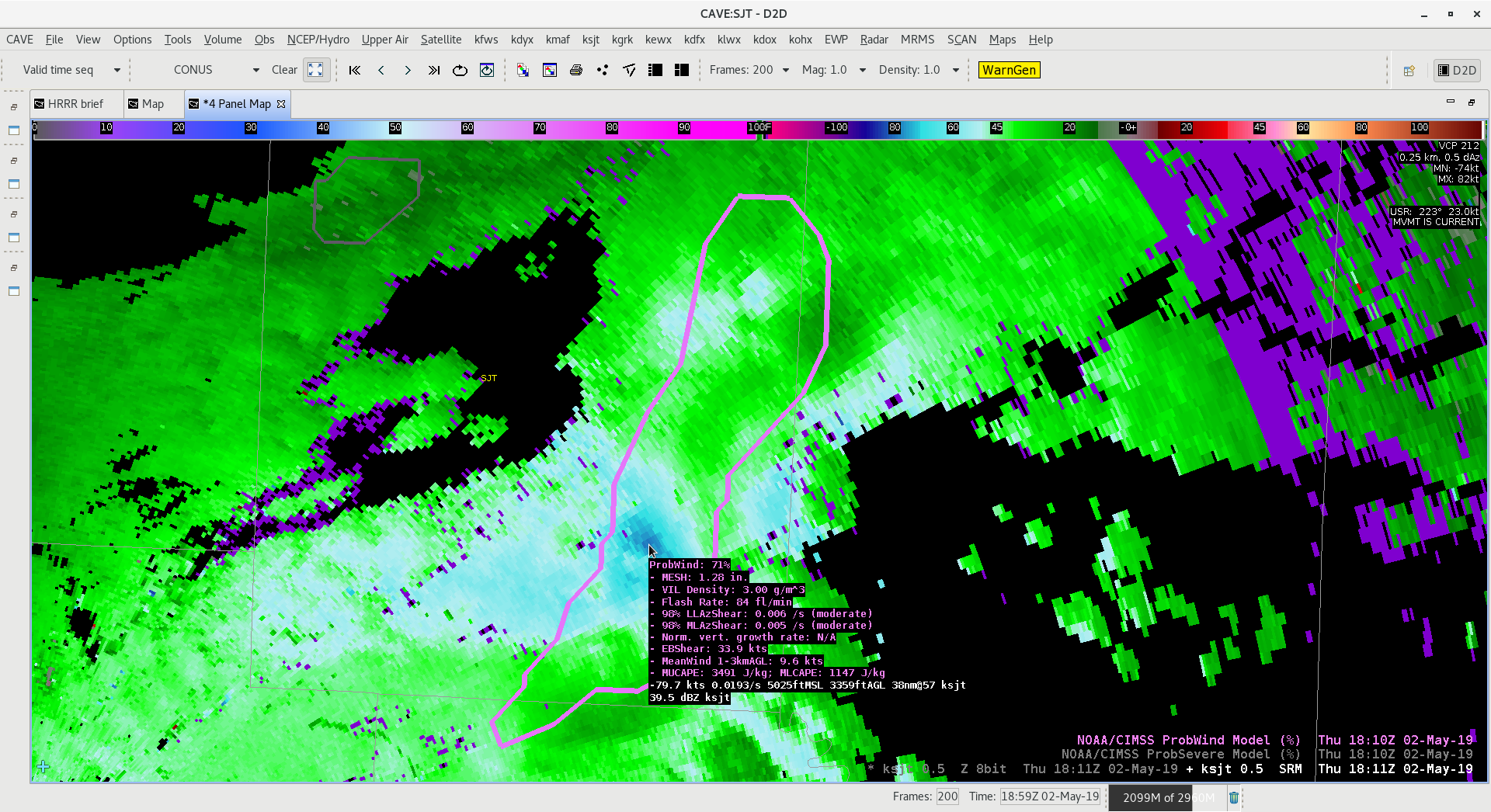 Here are two cases where ProbWind produced surprising results. In the case above, a very strong wind signature descended from a linear storm segment. BV data near 80 knots in the lower 3 scans, however ProbWind was only at 71%. I would have likely issued a warning here without ProbWind, however the ProbWind data made me question mid-level winds within the thunderstorm complex.
Here are two cases where ProbWind produced surprising results. In the case above, a very strong wind signature descended from a linear storm segment. BV data near 80 knots in the lower 3 scans, however ProbWind was only at 71%. I would have likely issued a warning here without ProbWind, however the ProbWind data made me question mid-level winds within the thunderstorm complex.